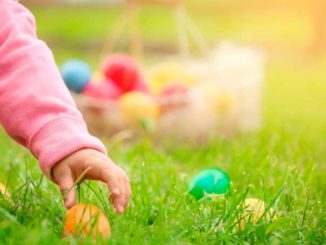
There is something particularly satisfying about putting quality, nutritious food on the table as a direct result of your gardening efforts. August is a transitional time in the vegetable garden. While cool-season planting begins in earnest next month, some of the more heat-tolerant, cool-season vegetables, such as the cole crops, can be planted in the garden now.
And, because our first frosts generally don’t arrive until late November or early December, we can also plant warm-season vegetables like tomatoes and cucumbers for fall production.
Prepare beds
It’s important to prepare beds properly before planting this next set of crops.
Clear the site of all weeds or finished vegetable plants.
Turn the soil with a shovel, fork or tiller to a depth of at least 8 inches, and spread a 2- to 4-inch layer of organic matter over the tilled soil like leaves, grass clippings, aged manure or compost.
This helps to maintain a high level of organic matter in the soil, which encourages a strong, healthy root system; improves drainage; retains moisture; provides nutrients; and promotes vigorous plant growth.
Fertilizer can be sprinkled on top of the organic matter.
Apply an all-purpose fertilizer following package directions for rates.
Gardeners should consider having their soil tested through their local LSU AgCenter office to learn more about the fertility of their soil and what fertilizer to use. A soil test also will tell you if you need to add lime to the soil.
Mix the organic matter and fertilizer thoroughly into the soil. Turn the soil by digging with a shovel, garden fork or a tiller until the added materials are evenly distributed in the soil.
If you are not gardening in raised beds, form the soil into raised rows about 8 inches high and 2 feet wide, with narrow walkways between them.
If you are gardening in containers, use a quality potting mix and fertilize with balanced soluble or slow release fertilizers used according to label directions.
Bug protection
Insects and diseases have had all summer to build up their populations, and insects such as whiteflies, stink bugs, aphids and caterpillars are common this time of year.
Since insect and disease pressure is often greater in the late summer and early fall than in the spring, watch plants carefully for problems and use appropriate control measures promptly when needed.
Tomatoes and bell peppers
Now is the time to plant tomato and bell pepper transplants for fall production.
If your pepper plants from the spring are still in reasonably good shape, they will often produce an excellent fall crop once the weather begins to cool.
Keep them well-fertilized and protected from insects and diseases.
Spring-planted tomato plants rarely survive the summer in decent shape, and new transplants are generally used for the fall crop.
Tomato cultivars that produce well in the fall include Heat wave, Hawaiian Hybrid, Bingo, Whirlaway, Celebrity and Solar Set. Plant several varieties and see which you like best.
Snap beans
Fall snap beans often produce better than those planted in spring.
This is because as the fall snap beans come into production, temperatures begin to cool while spring weather gets increasingly hotter as the beans produce their crop.
Snap beans are one of the easiest and most reliable vegetables and are especially appropriate for children’s gardens.
Wait until late August in North Louisiana or early September in South Louisiana to plant so they will come into bloom after the weather has begun to turn cooler, and choose bush types. Bush lima beans also may be planted now.
Cole crops
Cole crops to be planted this month from seeds or transplants include cabbage, broccoli, cauliflower, kohlrabi, kale and collards.
Cole is the Old English word for cabbage, and these days is used to refer to this group of closely related vegetables.
Broccoli is one of the best and easiest to grow of the group.
Transplants may be planted now through early October. Seeds can be planted now through early September.
They may be planted into pots or flats for transplanting into the garden or direct-seeded into the garden where they will grow.
Plant transplants 12 to 18 inches apart into well-prepared beds. The closer spacing will produce smaller heads but more total production.
What to plant
Here’s a list of the vegetables that can be planted into the garden this month:
•Plant transplants of tomato, peppers, broccoli, cauliflower, cabbage.
•Plant seeds of broccoli, Brussels sprouts, cabbage, Chinese cabbage, cauliflower, collards, cucumbers, kohlrabi, lettuce, mustard, turnips, squash, bush lima beans and bush snap beans (plant these in late August) and Swiss chard.
•Plant sets (small bulbs) of shallots and bunching onions.
•Plant small, whole Irish potatoes saved from the spring crop.
Contact your parish LSU AgCenter office to receive a copy of their Vegetable Planting Guide, a free publication that will provide you with information on the year-round planting dates for many vegetables.




Be the first to comment